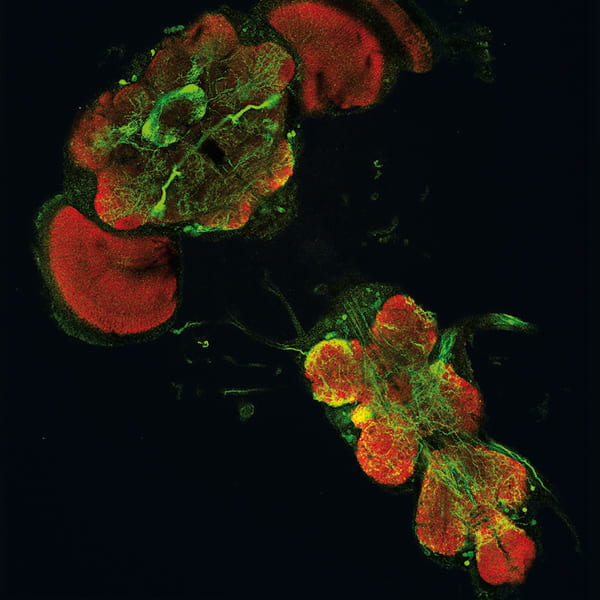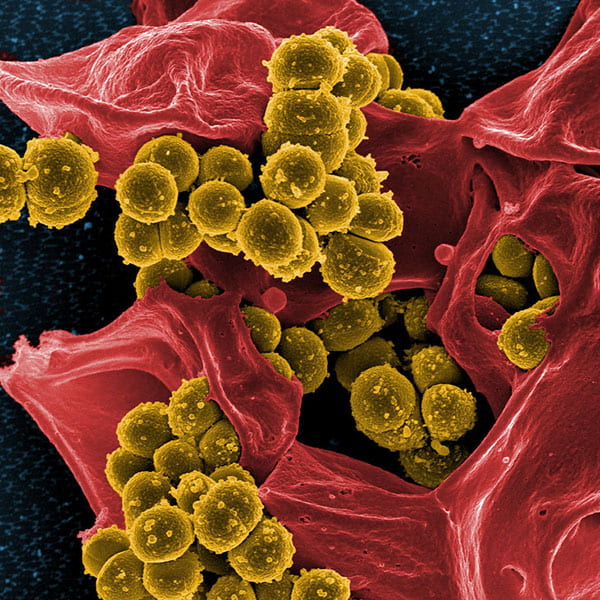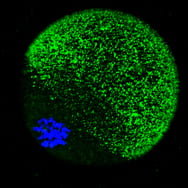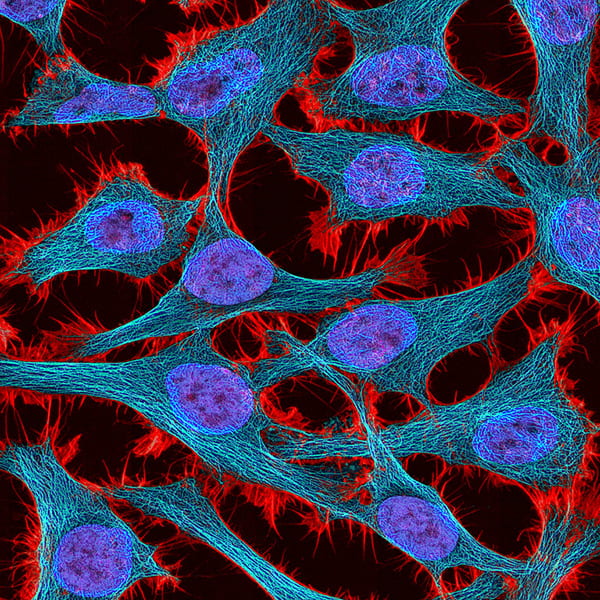Research Themes
The technology development that aims to create advancements in imaging methods will be integrated into 12 biomedical projects as testbed projects. The projects were selected on the basis of (a) their complexity and associated technical challenges; (b) scientific impact with potential for major impact on the diagnosis and treatment of disease; (c) variety of challenges across length scales; and (d) strength of potential or ongoing collaborations. Several of these projects represent partnerships with colleagues outside of Northwestern while others represent long-standing internal collaborations. They were also chosen to provide a variety of test bed characteristics in terms of tissue of origin and elemental content. Research labs supporting the projects include Lutsenko, Mukhopadhyay, Kozorovitskiy & O’Halloran, Culott, Skaar, Thiele, Woodruff, LaBonne, Fahmi, El Muayed, McCain, and Ardehali. These projects can be grouped into the following four research themes:

Theme A: Metal homeostasis or dysregulation in brain function
Temporal fluctuations in concentrations of essential metals such as zinc, iron and copper, are emerging as key factors in brain function. Intriguingly, dysregulation of Zn, Fe, Cu, Mn homeostasis can be a causative or contributing factor to the pathogenesis of a variety of neurological diseases, such as Menkes disease, aceruloplasminemia, Wilson disease, Kufor-Rakeb syndrome, Parkinson’s disease, and Alzheimer’s disease. Our ability to understand and ameliorate these diseases is dependent on our ability to quantify and identify the metal distribution within brain tissues. We have identified 3 initial DBPs that will allow us to challenge and extend Resource technologies and methods to map Mn, Cu, Zn, and Fe without artifacts caused by chemical fixation and in large tissue slices that can demonstrate the anatomical and physiological relevance of variations in metal distribution. They will leverage murine knockout models to (a) uncover the mechanistic basis for the recent discovery that mutations in in the Mn transport machinery ultimately give rise to the development of Parkinsonism; (b) the role of copper metabolism in the locus coeruleus in the development of Wilsons Disease; and (c) he role of metal fluxes in hippocampal neurogenesis.
Driving Biological Projects (DBPs) led by:
- Svetlana Lutsenko (John Hopkins University)
Integrative Analysis of Wilson’s Disease - Somshuvra Mukhopadhyay (University of Texas at Austin)
Regulation of Manganese Homeostasis and Detoxification by SLC30A10 - Yevgenia Kozorovitskiy & Thomas O’Halloran (Northwestern University)
Zinc Modulation of Rodent Hippocampal Structure and Function

Theme B: Metal modulation in host-pathogen interactions
One key aspect of innate immunity is an organism’s ability to alter the availability of metal(s) needed for growth and movement of an invading organism. A host organism will respond to pathogenic invaders by starving the pathogen of essential metal requirements or poisoning them with excess metals. Conversely, pathogens have developed defenses to skirt host defenses by sequestering metals from the host under metal starvation conditions or by developing detoxification mechanisms to prevent lethal uptake of excess metals. Mapping metal fluxes and distribution in host tissue is critical to understanding how the host attempts to fend off pathogen attack via metal sequestration or overload. The 3 DBPs selected for this theme offer test beds for two different metals (Cu and Zn) and 4 tissue types (kidney, intestine, lung, and brain) in the setting of health-threatening fungal (Cryptococcus neoformans; Candida albicans) and bacterial infections (Clostridium difficile).
Driving Biological Projects (DBPs) led by:
- Valeria Culotta (John Hopkins University)
Copper as a Nutrient for Candida albicans at the Host-Pathogen Interface - Eric Skaar (Vanderbilt University)
Metal Homeostasis in Intestinal Interactions

Theme C: Metal fluxes controlling reproduction and development.
Recent work from the Woodruff lab has demonstrated that metals control the development of mature mammalian gametes. XFM studies, in concert with fluorescent probe experiments, have revealed that fluxes of zinc ions in post-ovulatory oocytes dictate meiotic maturation and subsequent zinc loss upon fertilization are essential for successful oocyte maturation. The next major question in this field is whether temporal fluctuations of zinc and other transition metals play a crucial role in ovarian follicle development. Murine ovarian slices will serve as a test and bed for the cryo-preservation approach to mapping metal distribution in follicles at all stages of folliculogenesis using cryo-FXM and cryo-LA-ICP-TOF-MS techniques, under development in this Resource.
Zinc, copper, and iron also play critical roles in cellular proliferation, differentiation, and embryonic development. For example, zinc is required for mitotic and meiotic cell cycle progression and critical for proper development of the fetus and neonate. Likewise, inadequate nutritional supply of copper and iron during pregnancy can have damaging effects on fetal neonatal development. Demand for one or more of these elements various during development of specific organs and tissues, requires mobilization of specific elements and their redistribution during embryogenesis. Investigators would like to deploy 3D metal mapping in model organisms to look at changes in element distribution with development but are stymied by current technical limitations that make 3D image acquisition times prohibitively long. We will use cryo-preserved frog oocytes from the LaBonne lab zebrafish from the Fahrni lab as test beds for developing cryo-mapping methods using a combination of cryoSXFM to create an initial elemental map and cryo-LA-ICP-TOFMS to create a quantitative map.
Driving Biological Projects (DBPs) led by:
- Carole Labonne (Northwestern University)
Molecular Tools to Illuminate Metal Transport and Homeostasis - Christoph Fahrni (Georgia Technological University)
Molecular Tools to Illuminate Metal Transport and Homeostasis

Theme D: Metal imbalances in metabolic pathology
There is tantalizing evidence that zinc, copper, iron, and cadmium homeostasis play a critical regulatory in a broad range of normal physiologic functions of multiple cell types, including pancreatic beta cells, hepatocytes, adipocytes, and cardiomyocytes. The three DBPs selected as initial test beds for mapping metal distributions and interactions in relation to metabolic function vary in terms of the metals under scrutiny (Cu, Zn, Fe, and Cd) and cell type. These projects include (a) the study of interplay between heavy metal contaminants, such as cadmium, and endogenous zinc, in regulating pancreatic beta cell function; (b) the potential relationship between Fe intake and development of type 2 diabetes; and (c) the pathologies of heart failure associated with iron accumulation in cardiomyocytes and liver failure associated with abnormal copper accumulation in congenital disorders in copper homeostasis, such as in Menkes Disease and Wilson Disease. The technical challenges they pose relate to the ability of Resource imaging modalities to accurately measure tissue and cellular distribution of multiple metals (e.g. across length scales) and under an array of physiologic and pathologic conditions.
Driving Biological Projects (DBPs) led by:
- Malek El Muayed (Northwestern University)
Mechanisms of Cadmium Induced Disglycemia and Type 2 Diabetes - Donald McClain (Wake Forest University)
Iron Overload and the Development of Diabetes - Hossein Ardehali (Northwestern University)
Therapeutic Strategies for Novel Mitochondrial Copper Chelators for Heart Failure
